The engine cooling system is designed to carry out the cooling of various engine parts that heat up during its operation. In addition to the main function, the cooling system performs a number of others, such as heating the air for the heating, air conditioning and ventilation systems.
There are three types of cooling systems that differ depending on the type of cooling, namely: a closed type system (liquid), an open type system (air) and a combined system.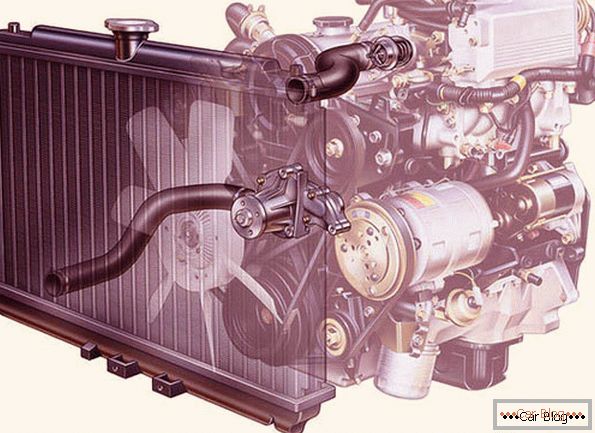
In an open-type (liquid) cooling system, heat from the heated engine parts is removed by the flow of a liquid. In the air cooling system of the engine is used, respectively, the air flow. The combined engine cooling system combines the principles of operation of air and liquid systems.
The most common liquid cooling system. This is explained by the fact that it provides even and more efficient cooling, besides it creates less noise, but when it is used, flushing the engine cooling system is mandatory. Therefore, the principle of the cooling system, we consider it on the example of a liquid system. Such a system works in all VAZs, including the VAZ 2106 tuning.
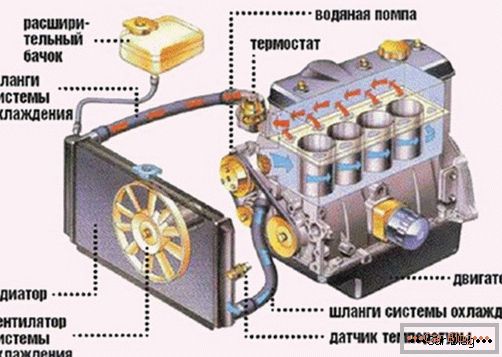
Engine cooling system diagram
In the beginning it is worth noting that the design of the cooling system of a gasoline engine is similar to the cooling system of a diesel engine. The general structure of the system is as follows: cooling system radiator, oil cooler, heating heat exchanger, expansion tank, thermostat, centrifugal pump, radiator fan, branch pipes, controls, engine cooling jacket.
1 - expansion tank; 2 - exhaust gas recirculation system radiator; 3 - heater heat exchanger; 4 - coolant temperature sensor; 5 - coolant pump; 6 - coolant temperature sensor at the radiator outlet; 7 - thermostat; 8 - oil cooler; 9 - additional coolant pump; 10 - cooling system radiator.
The radiator is necessary for cooling with a stream of air fluid that has been heated during engine operation. The radiator has a special device of tubular type in order to increase heat transfer. Together with the main radiator, the cooling system may include an oil radiator, as well as a radiator that recirculates the exhaust gases.
Recommended article: The braking system in the car is a must.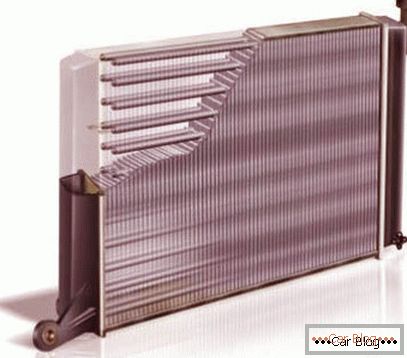
An oil cooler is needed to cool the oil. The gas recirculation radiator cools the gases themselves, thereby reducing the temperature. The operation of this radiator is ensured by a circulation pump. In addition, the radiator is an indispensable element in such a matter as flushing the engine cooling system.
The opposite to the radiator function is performed by the heat exchanger of the heater. The air is heated through the heat exchanger. For greater effect, it is installed near the coolant outlet.
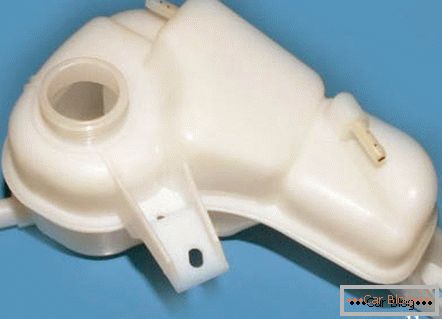
Expansion tank
The expansion tank is installed to compensate for changes in the level of coolant. In addition, the cooling system is filled with fluid through the tank.
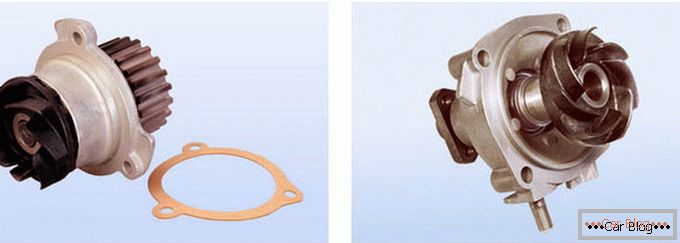
Centrifugal pump
Centrifugal pump обеспечивает циркуляцию охлаждающей жидкости. Он может иметь несколько вариантов приводов: ременной, шестеренный и другие. На двигателях, имеющих турбонаддув, устанавливается ещё один насос циркуляции. Кроме того, на них может использоваться двухконтурная engine cooling system.
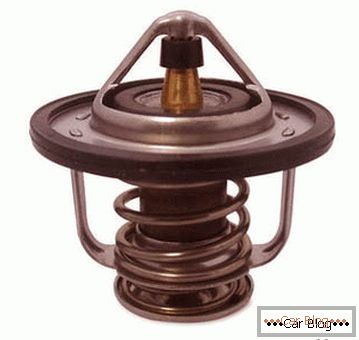
Thermostat
Thermostat регулирует количество жидкости для охлаждения, которая проходит через радиатор. То есть он обеспечивает оптимальную температуру в охлаждающей системе. Находится он в патрубке, который в свою очередь расположен между «рубашкой охлаждения» и радиатором. Мощные двигатели внутреннего сгорания оборудуются термостатом с электрическим подогревом, обеспечивающим регулирование температуры в два этапа.
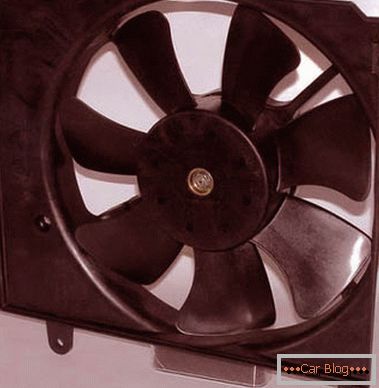
Engine cooling fan
An engine cooling fan is another way to increase cooling. It can have three types of drives: hydraulic, electrical and mechanical. The most common electric drive, it provides more room for adjustment.
Typical cooling system controls
The coolant temperature sensor reads the temperature data. Also, to improve the performance of the engine cooling system, there is another coolant temperature sensor for cooling the radiator outlet.
In addition, there is a sensor that signals that flushing the engine cooling system is necessary. The data read by the sensors is transmitted to an electronic control unit, which converts them into actions, which in turn control actuators.
In addition to the above, the following devices can be used for more efficient operation of the cooling system: a relay for an additional fluid pump for cooling, a thermostat heater, a system fan control unit.



